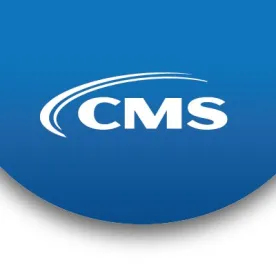On Nov. 20, 2020, the Department of Health and Human Services (HHS) Office of Inspector General (OIG) and the Centers for Medicare and Medicaid Services (CMS) issued two final rules, which implement changes to the Anti-Kickback Statute (AKS) and Physician Self-Referral Law (Stark Law) regulations (respectively the OIG Final Rule and the CMS Final Rule, collectively the Final Rules).[1] This alert is a part of the Dinsmore Health Care practice group’s ongoing summary of the Final Rules.
In an attempt to transform the health care system into “one that pays for value,” the Final Rules provide new exceptions and safe harbors for value-based arrangements. The Final Rules are intended to allow more flexibility and additional avenues for health care providers to structure value-based arrangements. Existing value-based arrangements that are already in compliance with a Stark exception or AKS safe harbor are not required to use one of the new exceptions or safe harbors.
The CMS Final Rule
The CMS Final Rule sets forth three new exceptions to the Stark Law for compensation schemes that qualify as “value-based arrangements.” Under the CMS Final Rule, a value-based arrangement is an arrangement for purposes of providing value-based activities for a target patient population in which the only parties are either: (1) a value-based enterprise (VBE) and VBE participants or, (2) multiple participants of the same VBE.[2] CMS asserts that value-based activities must reasonably achieve a value-based purpose, clarifying that referrals, as newly defined under 42 C.F.R. § 411.351, do not meet this requirement.
Notably, the new exceptions do not require compensation be set in advance or consistent with fair market value. The exceptions also do not prohibit compensation that takes the volume or value of referrals into account. However, the exceptions must meet a standard of “commercial reasonableness.”
The three exceptions included in 42 C.F.R. § 411.357(aa) of the CMS Final Rule are summarized below.
Exception 1: The VBE Assumes Full Financial Risk
The first exception applies to arrangements where the VBE has assumed “full financial risk” for patient care services. Under this exception, the VBE must be financially responsible or contractually obligated to be financially responsible within 12 months after the value-based arrangement begins. Full financial risk of the VBE is meant to de-incentivize unnecessary orders for patient care services or recommendations for higher-cost providers.
Exception 2: The Physician Bears Financial Risk
The second exception applies to value-based arrangements where the physician bears a “meaningful downside financial risk.” For purposes of the exception, “meaningful downside financial risk” means the physician bears responsibility for at least 10 percent of the total value of the remuneration received under the value-based arrangement, which continues for the entire duration of the value-based arrangement.
Exception 3: The Value-Based Arrangement Satisfies Specific Requirements
Finally, the third exception applies to situations in which neither party assumes downside financial risk. The exception prohibits remuneration that is conditioned on the volume or value of the referrals of any patients or other business generated. Under this exception, value-based arrangements are subject to specific requirements, including: (1) Remuneration is for value-based activities for patients in the target population; (2) Remuneration does not induce or limit medically necessary services for the target population ;(3) The method which determines the amount of remuneration is set in advance of providing services. The value-based arrangement must be documented in writing and signed by the parties. The exception also requires records of the methodology used to determine the amount of remuneration be maintained for at least six years.
The OIG Final Rule
The OIG Final Rule established three new AKS safe harbors that apply to remuneration exchanged by participants in value-based arrangements.[3] Similar to the exceptions to the Stark Law, the AKS safe harbors vary based on the amount of risk the parties assume. Though the Final Rules utilize the same terminology (“value-based arrangement,” “value-based enterprise,” etc.), OIG establishes its own definitions in the OIG Final Rule, found at 42 C.F.R. 1001.952(ee)(14). OIG comments that its definition of VBE is intentionally broad, meant to accommodate both large and small VBEs. The most prominent requirement of the OIG definition of VBE is that its participants must be able to prove that they are collaborating to achieve at least one value-based purpose.[4]
Under the OIG Final Rule, value-based arrangements must establish one or more legitimate outcome measures. The outcome measure must “(i) include one or more benchmarks related to improving, or maintaining improvement, in the coordination and management of care for the target patient population; (ii) relate to the remuneration exchanged under the value-based arrangement; and (iii) not be based solely on patient satisfaction or patient convenience.”[5] The outcome measure must be monitored and periodically assessed. Revisions should be made as the outcome measure data suggests. In the event the responsible party determines the value-based arrangement contains material deficiencies, the participants may, within 120 days, establish a corrective action plan, or otherwise must terminate the arrangement.
The three safe harbors included in 42 C.F.R. 1001.952((ee)-(gg)) of the OIG Final Rule are summarized below.
The first AKS safe harbor pertains to care coordination arrangements that improve quality, health outcomes, and efficiency. This AKS safe harbor applies to value-based arrangements where in-kind remuneration is exchanged between VBE participants or a VBE participant and the VBE, but the VBE assumes either no financial risk or less than a substantial financial risk. The safe harbor establishes conditions such as commercial reasonableness, outcomes measures, written documentation, record retention, monitoring, termination, marketing and patient recruitment and diversion, and reselling of remuneration. Additionally, the safe harbor requires the recipient to cover at least 15 percent of the offeror’s cost or 15 percent of the fair market value of the in-kind remuneration.[6] This payment requirement is meant to serve as a guardrail against fraud and abuse.
OIG offers examples to illustrate situations in which this safe harbor might apply. For instance, hospitals may enter into value-based arrangements with physician groups to coordinate post-discharge patient care. As part of the arrangement, the hospital may equip the physician groups with remote monitoring technology or care managers to aide with patient transitions, improve care outcomes, and or prevent unnecessary emergency visits. Another example involved a partnership between a medical technology company and a physician practice. The technology company may be permitted to outfit the practice with monitoring devices that improve the physician’s ability to provide appropriate medical interventions in real time. Though OIG hypothesized the types of value-based arrangements that might comply with the AKS safe harbors, real-life arrangements require fact-specific assessments.
The two additional AKS safe harbors pertain to value-based arrangements where the VBE assumes financial risk. First, the OIG Final Rule provides safe harbor for value-based arrangements where a VBE assumes substantial downside financial risk from a payor and a VBE participant assumes a meaningful share (defined as 5 percent) of the VBE’s total risk. The safe harbor contains a six-month “phase-in” period prior to the date in which the VBE assumes a substantial downside financial risk. To qualify for protection during the “phase-in” period, the VBE must contract with the payor in advance, agreeing to assume risk within the next six months. All remuneration exchanged pursuant to this safe harbor must be predominantly used to engage in the types of value-based activities for which the VBE has contracted to assume substantial downside financial risk.
Finally, if the VBE assumes full financial risk for each patient for at least a year, the value-based arrangement is permitted. VBEs have two options to assume full financial risk from a payor: (1) through arrangements that meet the definition of “value-based arrangement,” or (2) through a contract allocating full financial risk to the VBE. The protected “phase-in” period under the full financial risk safe harbor is one year. The VBE is also responsible for conducting quality and utilization reviews.
All three AKS safe harbors prohibit remuneration that takes into account the volume or value of patient referrals outside of the target patient population. In keeping with OIG’s goal to create a health care system based on quality of care, VBE participants may not be limited in their ability to make decisions in the best interests of patients. As another protective measure, the OIG Final Rule disallows the use of value-based arrangements for marketing or patient recruitment.
The following entities are generally excluded from taking advantage of the new AKS safe harbors: pharmaceutical manufacturers, distributors, and wholesalers, pharmacy benefits managers, laboratory companies, companies that primarily compound drugs or primarily dispense compounded drugs, medical supply or device manufacturers, distributors, or wholesalers, and entities or individuals who sell or rent medical equipment, prosthetics, orthotics, or supplies.
Key Takeaways
The Final Rules establish new safe harbors and exceptions for value-based arrangements. Both AKS and Stark Law adopt a tiered approach based on the amount of financial risk assumed by the VBE or its participants. The rule changes allow health care professionals to collaborate in ways that provide patients with effective and efficient care. The Final Rules give providers more flexibility to establish patient-centric programs at a lower cost. However, the new provisions are fact-specific, and each arrangement should be continuously evaluated to ensure compliance.
Ashley Durner, a law clerk and not licensed to practice co-authored this piece.
[1] https://public-inspection.federalregister.gov/2020-26140.pdf
[2] 42 C.F.R. § 411.351.
[3] https://www.govinfo.gov/content/pkg/FR-2020-12-02/pdf/2020-26072.pdf
[4] Under the OIG Final Rule, a “value-based purpose” is defined as: (i) coordinating and managing the care of a target patient population; (ii) improving the quality of care for a target patient population; (iii) appropriately reducing the costs to, or growth in expenditures of, payors without reducing the quality of care for a target patient population; or (iv) transitioning from health care delivery and payment mechanisms based on the volume of items and services provided to mechanisms based on the quality of care and control of costs of care for a target patient population.
[5] 42 C.F.R. 1001.952(ee)(4).
[6] 42 C.F.R. 1001.952(ee)(6). If the remuneration is a one-time cost, the recipient must make this contribution in advance of receipt. If it is an ongoing cost, contributions should be made at reasonable, regular intervals.




 />i
/>i

